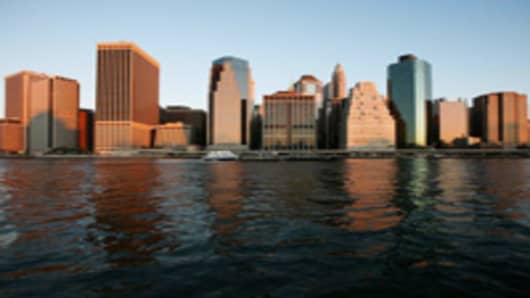Annual construction spending in New York City, which hit a record $24.6 billion last year, should rise by 18 percent over the next three years on strength in the residential, commercial and government sectors, a trade group said in a report released on Tuesday.
The latest building surge varies from most other booms when either the residential or nonresidential sector has raced ahead of the other, the New York Building Congress said in its report.
"Given all the current positive indicators, it is hard to envision a significant deterioration in construction activity during the forecast period," the trade group said.
The group predicted that construction spending will set annual records through 2009. This year's total should be $26.2 billion, followed by $27.5 billion in 2008, and $29 billion in 2009, the group said.
Helping fuel that growth is the demand for apartments. Though many other housing markets in the nation have cooled after experiencing soaring growth, strong demand is still driving up prices in New York.
"New York City is still playing catch-up from the 1990s," when only 10,000 or less apartments were built a year, the report said. The city needs a minimum of 20,000 new apartments every year, just to keep pace with demand.
More than 30,000 units should be built this year – the third year in a row at this volume.
Lower crime rates, the re-zoning of waterfront and industrial areas, and the weak dollar, which spurs overseas demand, set off this apartment-building race, the report said.
The office sector has also come into its own, partly due to "pent-up demand" after the Sept. 11, 2001, attacks froze construction.
Ground Zero's Freedom Tower
While billions of dollars are being spent on Ground Zero's Freedom Tower and three other skyscrapers planned for the former World Trade Center site, the focus could shift to Manhattan's West Side, where developers are vying to relocate Pennsylvania Station and build on the space above the rail yards of the Metropolitan Transit Authority.
The government sector also has big projects under way, and the report said most were "adequately funded through 2009."
That has not always been the case; work on Manhattan's Second Avenue subway, for example, had been halted several times over the decades.
New stadiums for the Yankees and Mets baseball teams, coupled with big expansions planned for Columbia University and the New York University Medical Center, should also boost construction, the report said.
It sees the number of construction jobs hitting 130,000 by 2009, up from 122,600 in 2007.
However, soaring costs, tighter credit and coordination challenges are among factors that could slow the brakes on construction growth, the report said.
With construction costs rising 1 percent a month, inflation could at some point take a toll. "While the appetite for construction has not yet been abated by rising costs, the question remains at what point developers and government might find building to be cost-prohibitive and scale back," the report said.
The forecasts also could be imperiled if Wall Street enters a "prolonged slump," it said. Though the city has tried to diversify its economy, banks and brokerages remain its main industry.
The report also called for "a committed partnership" between government and the private sector to avoid snarls over permits and supply deliveries.


